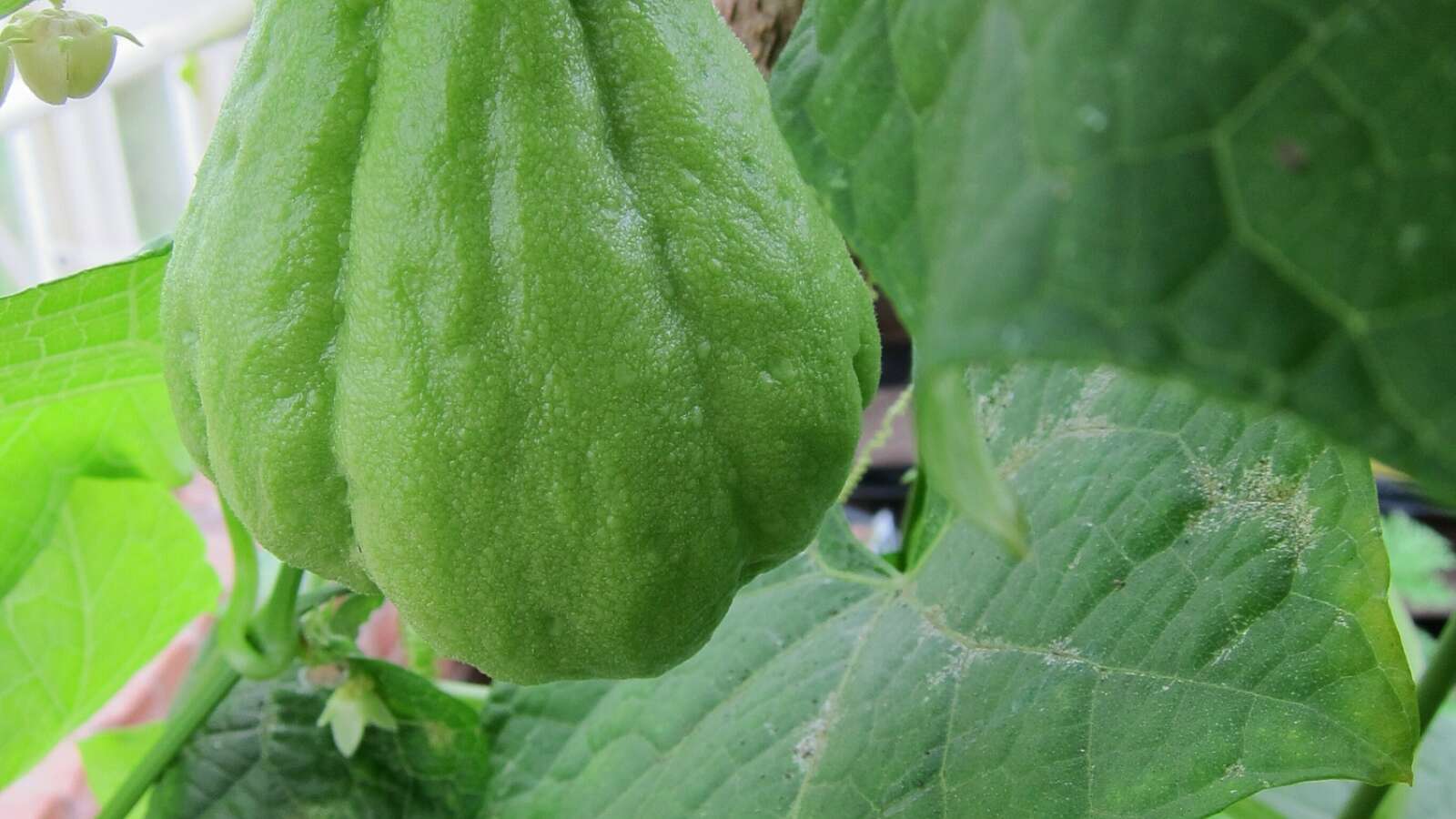
Chayote, christophine, chocho, mirlton, vegetable pear
| Growing calendar | |
|---|---|
| Sow indoors | Mid Mar - mid Apr |
| Sow outdoors | Mid May - mid Jun |
| Harvest | Aug - Sep |
How to grow Chayote
First it is necessary to source the appropriate material for growing in this country. Chayote can be bought from most Caribbean market stalls, but usually only the smooth type is sold. This will grow well but will produce lots of leaves and no fruits. Only the varieties with a spiney skin will produce fruits in the UK but these seem difficult to find.
Ideally, purchase fruits in March and leave them in a warm place until a sprout starts to appear from a crevice in the wider end of the fruit. Once the fruit starts to sprout, plant in a free-draining compost and continue to grow in a warm place.
Plants can be transferred either outside or to a glasshouse after the last frost. The plant needs a support structure to grow and will climb vigorously, producing a large quantity of leaf material. If you have a variety that flowers, it should flower after late July and start producing fruits a few weeks later.
Harvesting and use of Chayote
Chayote should be peeled, then it can be chopped and eaten raw in salads or cooked in stews. It has a taste and texture similar to avocado and squash.
How to save Chayote Seed
Once chayote is harvested it needs to be kept in a cool place to stop it shooting too early before you plant it next season. Store it in in the fridge but keep it away from the sides to prevent frost damage to the fruit. The fruits can be taken out in March and allowed to sprout to produce next year's plants.
| Growing notes | |
|---|---|
| Difficulty | Tricky |
| Germination time | 1-2 weeks |
| Average time to harvest | |
| Equipment needed | |
| Average plant size | |
| Family group to grow with | |
| Key nutritional content | |
| Latin name | Sechium edule |
| Seed saving notes |